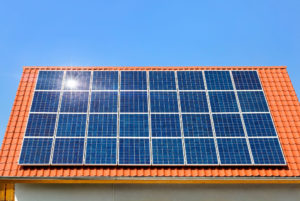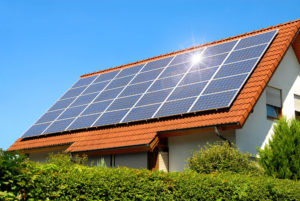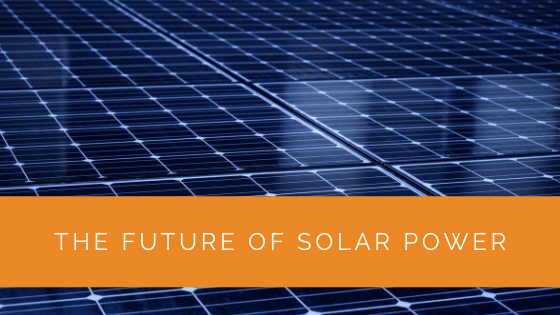European countries have backed solar photovoltaic (PV) expansion to lower carbon emissions and foster a clean technology sector for a long time. However, solar power has slowly developed in the United Kingdom compared to other European countries.
Nevertheless, the growth of solar power and the use of solar panels is increasing rapidly in the UK, and the future seems bright.
Many aspects and details should be considered if one wants to understand the future of UK solar power. In this article, you will get to know just that.
Contents
- 1 Key Takeaways
- 2 Solar Energy in the UK: An Overview
- 3 The Growth of Renewable Energy Sources in the UK
- 4 The Future of Solar Energy in the UK
- 5 The Future Concerns for Renewable Energy in the UK
- 6 Case Study: Pioneering Solar Power Solutions in the UK
- 7 Expert Insights From Our Solar Panel Installers About The Future of Solar Power in the UK
- 8 Discover the Power of Solar with Solar Panels Network
- 9 Summing Up
Key Takeaways
- Solar power is rapidly growing in the UK, thanks to government incentives and reduced equipment costs, with firms making substantial investments and using solar panels in various projects.
- The UK’s solar capacity has seen significant growth, but challenges like the cost of solar equipment, dependence on gas prices, and the supply chain need to be addressed for sustained growth.
- To ensure a bright future for solar energy in the UK, efforts are needed to increase awareness of solar benefits, promote innovation, and establish a sustainable supply chain for solar equipment.
Solar Energy in the UK: An Overview
Solar panels are becoming more appealing for the region due to government incentives and reduced equipment costs. People have become more aware of the unbounded advantages of solar energy and are eager to leverage it.
On the other hand, firms are putting together plans to buy solar farms and solar plants because of their reliability, flexible usage and ecological benefits. Firms have come to understand the increasing importance of solar power and are determined to make exponential advancements in this field by making hefty investments.
Moreover, solar panels can be used in multiple projects of different types. PV panels of various varieties could be utilised on building facades, windows, and public areas. The flexibility with which solar power can be produced and used makes it a reliable and futuristic energy source.
Also, the new solar photovoltaic (PV) and associated technologies can help reduce carbon emissions more than ever. It is also expected that they can help lower installation costs and other expenses while expanding the spectrum of solar power applications. Hence, these advancements are paving the way for public and private UK businesses’ widespread use of solar power.
Furthermore, the accompanying technologies of installing panels, energy storage, and grid integration are constantly improving and becoming affordable. It can fuel the development and widespread application of solar panels.
In a nutshell, the emerging solar power technologies will help the UK reach its emission reduction targets while also delivering on the promise of low-cost, widespread solar power.

The Growth of Renewable Energy Sources in the UK
Even while it may appear that the UK is falling behind its European counterparts, a report by the UK government titled “Section 6- Renewables” demonstrates that the sector’s prospects are rapidly increasing.
The British government has made several new changes to the PV system legislation. Two of the most significant changes are the closure of the Feed-in Tariff and the establishment of the Smart Export Guarantee (SEG), which will provide financial support to small low-carbon generators. These adjustments can foster the growth of solar technology to improve the amount of electricity generated and the use of this green energy in the UK.
The positive effect of these new changes was seen, and the UK’s solar capacity has continued to grow.
So, in comparison to past years, the region’s solar energy growth has been strong. And more investors are flocking to this sector, expecting it to become the most dependent shortly.
However, a few factors can impede the growth of the UK solar capacity and widespread use of solar panels. These factors include increased VAT on installing solar panels, lack of awareness and expensive technology.
The Future of Solar Energy in the UK
The renewable energy of the sun has limitless perks and applications. It has the potential to transform the world’s electricity generation trends. Despite the enticing advantages of solar panels or solar energy, the future cannot be predicted. There are multiple reasons behind this unpredictability, such as the expensive cost, the influence of gas prices and the supply. Let’s look at each of them in detail.
Cost
The PV cells and other solar equipment are still not affordable for many. Hence, people are not willing to invest a hefty sum of money to save money. So, the future will remain blurry as long as the cost of installing the solar PV system and other expenses doesn’t become feasible for the public.
The Solar module costs are being driven down by the combination of material efficiency, light conversion efficiency, energy efficiency and production efficiency. Hence, when the costs, both in terms of time and money, would not be curbed at these levels, the prices would remain stagnant. However, it is noteworthy that solar module prices have dropped over the last few decades, but we still have a long way to go.
Nevertheless, the flame of hope is still bright because the new technological advancements in solar energy are aiding in reducing the overall solar module costs. As a result, it can be expected that solar panels will be sold at much cheaper rates than they are being sold today.

Gas Prices
In the United Kingdom, gas is the “marginal supplier,” meaning that gas plants dictate power pricing most of the time instead of coal and power prices in neighbouring countries across most of Europe.
So, the future of solar energy costs in the UK directly or indirectly depends on gas prices and fossil fuels. If gas and electricity prices in the United Kingdom rise, solar PV will have an easier time competing, and market penetration will continue to rise.
Supply
Solar power is gaining importance with time, and due to climate change, it is expected to gain immense value in the coming future as well. Also, as natural fossil fuels are non-renewable energy sources and are expected to be exhausted soon, using solar energy as the primary substitute is obvious. As a result, demand will increase, and the country that fails to become independent in solar power supply will suffer.
A solar panel takes time to manufacture, and if there isn’t a balance between demand and supply, the future will be affected.
Chinese solar companies manufacture most solar panels, as the UK also depends on them to meet the demands. It can be said that the future of solar power in the UK will also remain dependent. There is a need for more solar equipment manufacturers and a sustainable framework that promotes solar growth in the UK.
The Future Concerns for Renewable Energy in the UK
The solar sector has skyrocketed, from a mere 12 megawatts of capacity in 2006 to over 13,000MW last year, and the UK has emerged as a significant worldwide participant. However, several concerns still could stifle the rise of solar power in the United Kingdom.
Here is a list of concerns that need to be addressed-
- People still see solar panels as a way to save on energy bills. There is a need to increase awareness about solar energy and its benefits among the masses,
- Generating electricity from solar panels or installations should not be the primary objective. The government has to take steps to promote innovation and development in this field.
- The solar power future and the aim to surpass fossil fuels might suffer because of the imbalance in the supply chain. The risks in the demand-supply chain need to be addressed appropriately.
Case Study: Pioneering Solar Power Solutions in the UK
Background
At Solar Panels Network, we pride ourselves on being at the forefront of the solar revolution in the UK. With the government’s push towards renewable energy and increasing awareness among the public, we identified a growing need for efficient and innovative solar power solutions. Our mission has been to make solar energy accessible and affordable while providing cutting-edge technology to maximise energy savings.
Project Overview
One of our landmark projects involved a large-scale installation for a mixed-use development that included residential and commercial units. The goal was to reduce the overall carbon footprint of the development and provide sustainable energy solutions to the community. The project presented unique challenges, including limited roof space and the need for high energy output to meet the demands of both residents and businesses.
Implementation
- High-Efficiency Solar Panels: We selected monocrystalline solar panels for their superior efficiency and space-saving attributes.
- Energy Storage Systems: Implemented state-of-the-art battery systems to store excess energy, ensuring a continuous power supply even during peak demand periods.
- Smart Inverter Technology: Deployed inverters capable of optimising power conversion and integrating with smart grid systems.
- Advanced Monitoring Systems: Installed monitoring systems to provide real-time data on energy production and consumption.
Results
- Increased Energy Independence: The installation met over 70% of the development’s energy needs, significantly reducing reliance on the national grid.
- Substantial Cost Savings: Residents and businesses experienced a combined energy cost reduction of approximately 25%, highlighting the financial viability of solar investments.
- Enhanced Environmental Impact: The project contributed to a significant reduction in carbon emissions, aligning with the UK’s broader environmental goals.
- Positive Community Feedback: The project was well-received, with residents expressing satisfaction with the lower energy costs and the project’s contribution to environmental sustainability.
Summary
This project exemplifies the potential of solar power to transform the energy landscape in the UK. By leveraging advanced technology and innovative solutions, we demonstrated that solar energy is not only viable but also a critical component of sustainable development. The successful implementation of this project underscores the importance of continued investment in renewable energy and the need for a supportive regulatory environment. As we look to the future, Solar Panels Network remains committed to pioneering new solutions and expanding the adoption of solar power across the country.
Expert Insights From Our Solar Panel Installers About The Future of Solar Power in the UK
The trajectory of solar power in the UK is set to rise significantly, thanks to advancements in technology and favourable government policies. As installers, we’ve seen a marked increase in demand, especially for residential installations that are looking to reduce energy costs and carbon footprints.
Senior Solar Installation Engineer
One of the key challenges we face is educating homeowners about the long-term benefits of solar investment. While the initial costs can be daunting, the returns in terms of energy savings and environmental impact are substantial.
Renewable Energy Specialist
As more businesses and households adopt solar technology, we’re not just seeing an increase in capacity but also in the sophistication of installations. Innovations like energy storage solutions and smart grid integration are becoming more common, further solidifying solar power’s role in our energy future.
Chief Technical Officer
Discover the Power of Solar with Solar Panels Network
Are you navigating the world of solar installations? Look no further than Solar Panels Network, the UK’s trusted partner in harnessing the sun’s potential. Our dedication goes beyond just installations; we’re on a mission to transform how homeowners and businesses across the UK perceive and utilise energy. By choosing us, you’re reducing your carbon footprint and making a smart financial move that promises savings for years ahead. Contact us today and embark on your solar journey.
Summing Up
If we smartly leverage the available solar energy, develop innovative solutions and support the solar industry’s growth, the UK can expect to become the world’s largest energy source of solar power in the coming years. Not only will the energy from the sun’s rays become more cost-effective, but it will also generate new opportunities.
The future of solar power in the UK is bright if proper measures are taken.
About the Author
Solar Panels Network stands at the forefront of solar energy solutions, driven by a team of seasoned solar engineers and energy consultants. With over decades of experience in delivering high-quality solar installations and maintenance, we are committed to promoting sustainable energy through customer-centric, tailored solutions. Our articles reflect this commitment, crafted collaboratively by experts to provide accurate, up-to-date insights into solar technology, ensuring our readers are well-informed and empowered in their solar energy decisions.

